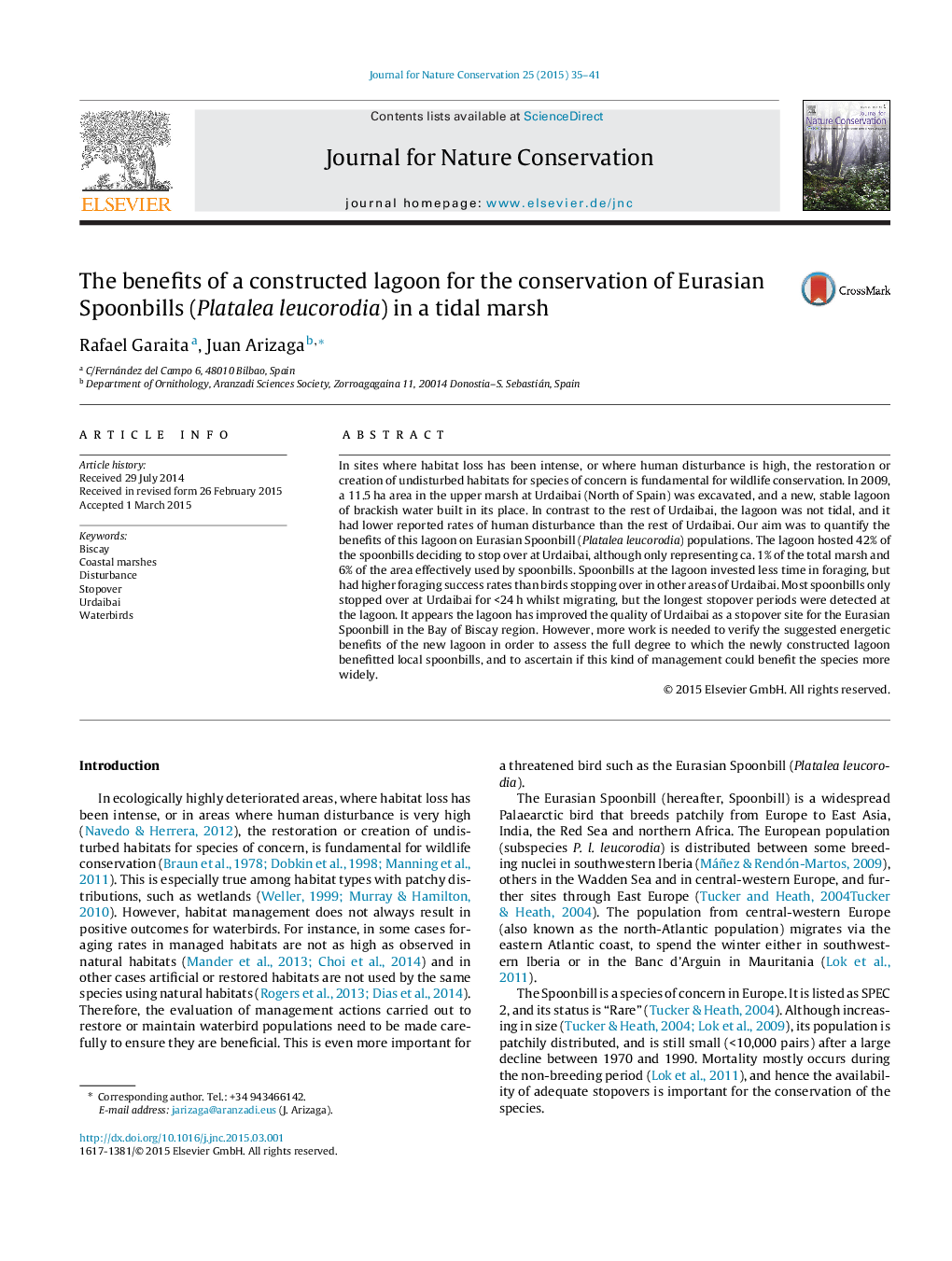| Article ID | Journal | Published Year | Pages | File Type |
|---|---|---|---|---|
| 4399772 | Journal for Nature Conservation | 2015 | 7 Pages |
In sites where habitat loss has been intense, or where human disturbance is high, the restoration or creation of undisturbed habitats for species of concern is fundamental for wildlife conservation. In 2009, a 11.5 ha area in the upper marsh at Urdaibai (North of Spain) was excavated, and a new, stable lagoon of brackish water built in its place. In contrast to the rest of Urdaibai, the lagoon was not tidal, and it had lower reported rates of human disturbance than the rest of Urdaibai. Our aim was to quantify the benefits of this lagoon on Eurasian Spoonbill (Platalea leucorodia) populations. The lagoon hosted 42% of the spoonbills deciding to stop over at Urdaibai, although only representing ca. 1% of the total marsh and 6% of the area effectively used by spoonbills. Spoonbills at the lagoon invested less time in foraging, but had higher foraging success rates than birds stopping over in other areas of Urdaibai. Most spoonbills only stopped over at Urdaibai for <24 h whilst migrating, but the longest stopover periods were detected at the lagoon. It appears the lagoon has improved the quality of Urdaibai as a stopover site for the Eurasian Spoonbill in the Bay of Biscay region. However, more work is needed to verify the suggested energetic benefits of the new lagoon in order to assess the full degree to which the newly constructed lagoon benefitted local spoonbills, and to ascertain if this kind of management could benefit the species more widely.
